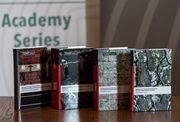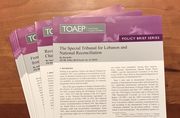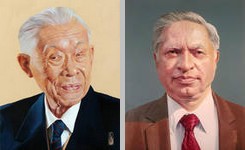Table of contents:
3.1. The perpetrator committed an act of a sexual nature against one or more person; OR
P.1. Evidence that the perpetrator sexually molested one or more persons.
P.1.1. Evidence of touching or grabbing a person or persons breast.
P.1.2. Evidence of touching or rubbing a person or persons inner thighs with a weapon.
P.2. Evidence that the perpetrator mutilated a person or persons sexual characteristics.
P.2.1. Evidence of mutilating a persons genitals.
P.2.2. Evidence of slicing off a persons breasts.
P.3. Evidence that the perpetrator sexually tortured one or more persons.
P.3.1. Evidence of pouring boiling palm oil on a persons vagina.
P.4. Evidence the perpetrator subjected a person or persons to sexual verbal abuse.
P.4.1. Evidence of subjecting a person or persons to humiliating sexual threats.
3.2. The perpetrator caused such person or persons to engage in an act of a sexual nature.
P.5. Evidence that the perpetrator subjected one or more persons to forced nudity.
P.5.1. Evidence of forcing a person or persons to perform exercises naked in public.
P.5.2. Evidence of forcing a person or persons to march around naked in public.
P.5.3. Evidence of forcing a person or persons to dance and strip naked in public.
P.5.4. Evidence of forcing a person or persons to bathe the perpetrator.
P.6. Evidence that the perpetrator forced one or more persons to have sexual intercourse.
P.6.1. Evidence that the perpetrator forced one or more persons to commit incest.
P.7. Evidence that the perpetrator forced one or more persons to dress in provocative clothing.
3.3.1. Evidence of use of force.
P.8. Evidence that the perpetrator used physical force on a person or persons.
3.3.2. Evidence of threat of force.
P.9. Evidence the perpetrator threatened one or more persons using a weapon.
P.9.1. Evidence of pointing a gun or rifle.
P.9.2. Evidence of threatening to cut off private parts using a knife.
P.10. Evidence that the perpetrator threatened verbally to kill one or more persons.
P.11. Evidence that the perpetrator threatened to use force against a third person.
P.12. Evidence of regular violence against detainees.
P.13. Evidence of detention in privately owned apartments.
3.3.4. Evidence of psychological oppression.
P.14. Evidence of psychological oppression amounting to de facto detention.
P.15. Evidence of constant fear.
P.15.1. Evidence of constant threat of being subject to sexual violence.
3.3.5. Evidence of abuse of power.
P.16. Evidence of victims being subjected to the authority of the perpetrator.
P.17. Evidence that the perpetrator "bribed" one or more persons to "agree" to sexual intercourse.
P.17.1. Evidence of promising to spare family members.
P.17.2. Evidence of providing food and water.
P.17.3. Evidence of changing detention conditions.
P.18. Evidence of the involvement of local authorities.
3.3.6. Evidence of a coercive environment.
P.19. Evidence of an armed conflict.
P.20. Evidence of a military presence.
P.20.1. Evidence of a military presence in a refugee camp.
3.3.7. Evidence of incapacity to give genuine consent.
P.21. Evidence of physical incapacity.
P.22. Evidence of mental incapacity.
P.23. Evidence of induced incapacity.
P.23.1. Evidence of induced incapacity caused by surprise.
P.23.2. Evidence of induced incapacity caused by misrepresentation.
P.23.3. Evidence of incapacity caused by intoxication.
Element:
The last offence of art. 8 (2) (b) (xii), "any other form of sexual violence also constituting a grave breach of the Geneva Conventions", can be considered a "catch-all" provision capturing any form of sexual offense not already covered by the first five offenses enumerated at art.8 (2) (b) (xxii) i.e. rape, sexual slavery, enforced prostitution, forced pregnancy and enforced sterilization. One should refer to these specific MPMDs for these particular crimes.
3.1. The perpetrator committed an act of a sexual nature against one or more person; OR
P.1. Evidence that the perpetrator sexually molested one or more persons.
A. Legal source/authority and evidence:
"343Sexual violence would also include such crimes as sexual mutilation, forced marriage, and forced abortion as well as the gender related crimes explicitly listed in the ICC Statute as war crimes and crimes against humanity, namely "rape, sexual slavery, enforced prostitution, forced pregnancy, enforced sterilization" and other similar forms of violence. Rome Statute of the International Criminal Court, UN Doc A/CONF.183/9, 17 July 1998, at Art. 7(1)(g), Art. 8(2)(b)(xxii), and Art. 8(2)(e)(vi)."
P.1.1. Evidence of touching or grabbing a person or persons breast.
Prosecutor v. Milutinović et al., Case No. IT-05-87-T, Judgement (TC) Vol II, 26 February 2009, para. 631-632 and 689:
"631. Both K24 and Rrahmani were relatively consistent in their accounts of the events that took place in and outside of the barn. According to Rrahmani, once they all entered the barn the two soldiers ordered the women to hand over their money, jewellery, and identification documents, and started taking women out of the barn, in succession. The first woman to come back told Rrahmani that she was forced to take her clothes off. When Rrahmani was taken out, she was searched, asked about the whereabouts of her husband, and then told to lift her blouse and her bra up. The soldier searching her touched her breasts and taunted her with sexual comments. About 20 minutes later she was told to go back into the barn. A third soldier arrived, who, according to Rrahmani, was very tall and blonde and could speak Albanian. In the next two hours or so all women, except for 632. K24 also stated that a tall man with blonde hair took the women out of the room and searched them one by one, forcing them to take their clothes off. Eventually, over a period of two hours, he took out five young girls a number of times. These girls were: the three sisters, Antigona, Bukurije, and Mirishahe Dibrani; Lumnie Zymeri; and Zahide Xhema. They went out one by one and came back with their clothes in disorder, terrified and not willing to speak about what had happened. One said that they were stripped naked.1615 At one point K24 was also taken outside, where she saw the other two men with tiger badges. The blonde man ordered her to take her clothes off and dropped his trousers to his knees. He started touching her breasts and vagina, at which point she fainted. When she regained consciousness she realised that she had not been raped. She was then told to get up and start walking to the barn. Just before entering the barn, the soldier escorting her told her to sit down and rest. Some five minutes later he told her to follow him and ordered her to take off her clothes. He took off his trousers and his underwear and started touching her. The man then threatened her with a knife, but soon after lost patience and told her to go back to the barn, which she did. Both women testified that, throughout their ordeal, the men taunted them verbally, making statements such as "[s]o, you want a republic, you want independence" and "you are asking for NATO, for Thaqi and Rugova".
"689. The Chamber is satisfied that the evidence of K24, as well as of Rrahmani, is both credible and reliable. Thus, it is of the view that both K24 and Rrahmani were touched in a sexual and threatening manner around mid-April 1999[ ]
P.1.2. Evidence of touching or rubbing a person or persons inner thighs with a weapon.
A. Legal source/authority and evidence:
Prosecutor v. Miroslav Kvočka et al., Case No. IT-98-30/1-T, Judgement (TC), 2 November 2001, paras. 98-99:
"237 Sifeta Susic, T. 3020-3021.
238 Witness J, T. 4769; Zlata Cikota, T. 3337-3338.
239 Witness J, T. 4774-4775; Witness AT, T. 6083; Witness K, T. 4983; Witness A, T. 5486; Witness F, T. 5382; Sifeta Susic, T. 3018
240 Witness J, T. 4779-4782.
241 Witness J, T. 4782-4783."
Prosecutor v. Anto Furundija, Case No. IT-95-17/1-T, Judgement (TC), 10 December 1998, para. 40:
[B. Evidentiary comment:]
P.2. Evidence that the perpetrator mutilated a person or persons sexual characteristics.
A. Legal source/authority and evidence:
Update to the Final Report of the UN Special Rapporteur on the Situation of Systematic Rape, Sexual Slavery and Slavery-like Practices During Armed Conflict, at para. 16, U.N. Doc. No. E/CN.4/Sub.2/2000/21 (2000):
"16. In June 1999, the Special Rapporteur participated in a two-day mission to Sierra Leone at the invitation of the United Nations High Commissioner for Human Rights. [ ] These and numerous other testimonies reveal that sexual slavery and other forms of sexual violence, including [ ] sexual mutilations [ ], were systematic and widespread during the armed conflict, with rebel soldiers committing the vast majority of the reported abuses.20"
"20See Human Rights Watch, Getting Away with Murder, Mutilation, and Rape: New Testimony from Sierra Leone (June 1999), pp. 9, 31-38:
P.2.1. Evidence of mutilating a persons genitals.
P.2.2. Evidence of slicing off a persons breasts.
A. Legal source/authority and evidence:
[B. Evidentiary comment:]
P.3. Evidence that the perpetrator sexually tortured one or more persons.
P.3.1. Evidence of pouring boiling palm oil on a persons vagina.
P.4. Evidence the perpetrator subjected a person or persons to sexual verbal abuse.
P.4.1. Evidence of subjecting a person or persons to humiliating sexual threats.
A. Legal source/authority and evidence:
[B. Evidentiary comment:]
3.2. The perpetrator caused such person or persons to engage in an act of a sexual nature.
P.5. Evidence that the perpetrator subjected one or more persons to forced nudity.
P.5.1. Evidence of forcing a person or persons to perform exercises naked in public.
P.5.2. Evidence of forcing a person or persons to march around naked in public.
A. Legal source/authority and evidence:
[B. Evidentiary comment:]
P.5.3. Evidence of forcing a person or persons to dance and strip naked in public.
A. Legal source/authority and evidence:
[B. Evidentiary comment:]
P.5.4. Evidence of forcing a person or persons to bathe the perpetrator.
P.6. Evidence that the perpetrator forced one or more persons to have sexual intercourse.
A. Evidentiary comment:
The definition of rape followed since Akayesu may not cover all the situations where it would be appropriate to enter a rape conviction. If two persons are forced to have sexual intercourse with each other, one of the victims would not, pursuant to the current definition of rape, be regarded as having been raped in the absence of penetration of his body. Yet, this type of sexual violence is not uncommon during conflicts. A reassessment of the definition is necessary to allow such an incident to be regarded as rape with respect to both victims. Nonetheless, other provisions of the Statute could capture this conduct, such as torture (art. 7(1)(f)), sexual violence (art. 7(1)(g)-6), other inhumane acts (art. 7(1)(k)), and cruel treatment (art. 8(2)(c)(i)-3). Moreover, the Tribunal standing in the Delalic case has opened the possibility of categoryzing this type of conduct as rape:
P.6.1. Evidence that the perpetrator forced one or more persons to commit incest.
A. Legal source/authority and evidence:
Prosecutor v. Zejnil Delalić et al., Case No. IT-96-21-T, Judgement (TC), 16 November 1998, paras. 1065-1066:
[B. Evidentiary comment:]
P.7. Evidence that the perpetrator forced one or more persons to dress in provocative clothing.
According to a commentator, "the element of "violence" is captured in the last phrase of element 1 which indicates that the conduct must be forcibly committed against the person, or that such use of force, threat of force or coercion must cause the person to engage in an act of a sexual nature. The examples of coercion appearing in element 1 are borrowed from the identical element appearing in the crime of rape." (Eve La Haye in Roy S. Lee (ed.), The International Criminal Court: Elements of Crimes and Rules of Procedure and Evidence, p. 198). Hence, one can look at the jurisprudence taken from the crime of rape until the ICC develops its own precedents.
Attention should also be paid to parts of Rule 96 of the Rules of Procedure and Evidence governing the admissibility of evidence in cases of sexual assault at the ICTR and ICTY :
3.3.1. Evidence of use of force.
A. Legal source/authority and evidence:
"542. [ ] The consent or free will of the victim is absent. It is often rendered impossible or irrelevant by, for example, the threat or use of force [ ]"
P.8. Evidence that the perpetrator used physical force on a person or persons.
A. Legal source/authority and evidence:
"210. A.S. stayed in Radomir Kovačs apartment for about a month or two. [ ] Jagos Kostic would rape her anytime he wanted, orally and vaginally, and she had no choice but to comply with his demands; he would also sometimes beat her and once threatened to cut her throat.621 [ ]."
"621T 2018."
Prosecutor v. Alfred Musema, Case No. ICTR-96-13-T, Judgement (TC), 27 January 2000, para. 833:
Prosecutor v. Jean-Paul Akayesu, Case No. ICTR-96-4-T, Judgement (TC), 2 September 1998, paras. 424, 437:
"424. Witness OO, a young Tutsi woman, testified that she and her family sought refuge at the bureau communal in April 1994 and encountered many other Tutsi refugees there, on the road outside the compound. While she was there, she said, some Interahamwe arrived and started killing people with machetes. She and two other girls tried to flee but were stopped by the Interahamwe who went back and told the Accused that they were taking the girls away to "sleep with" them. Witness OO told the Chamber that standing five meters away from the Accused, she heard him say in reply, "take them". She said she was then separated from the other girls and taken to a field by one Interahamwe called Antoine. When she refused to sit down, he pushed her to the ground and put his "sex" into hers, clarifying on examination that he penetrated her vagina with his penis. When she started to cry, she said he warned her that if she cried or shouted, others might come and kill her."
3.3.2. Evidence of threat of force.
A. Legal source/authority and evidence:
"542. [ ] The consent or free will of the victim is absent. It is often rendered impossible or irrelevant by, for example, the threat or use of force [ ]."
P.9. Evidence the perpetrator threatened one or more persons using a weapon.
P.9.1. Evidence of pointing a gun or rifle.
A. Legal source/authority and evidence:
Prosecutor v. Zejnil Delalić et al., Case No. IT-96-21-T, Judgement (TC), 16 November 1998, para. 958:
[B. Evidentiary comment:]
P.9.2. Evidence of threatening to cut off private parts using a knife.
A. Legal source/authority and evidence:
Prosecutor v. Miroslav Kvočka et al., Case No. IT-98-30/1-T, Judgement (TC), 2 November 2001, para. 98:
"237 Sifeta Susic, T. 3020-3021.
238 Witness J, T. 4769; Zlata Cikota, T. 3337-3338.
239 Witness J, T. 4774-4775; Witness AT, T. 6083; Witness K, T. 4983; Witness A, T. 5486; Witness F, T. 5382; Sifeta Susic, T. 3018"
Prosecutor v. Anto Furundija, Case No. IT-95-17/1-T, Judgement (TC), 10 December 1998, para. 82:
Prosecutor v. Zejnil Delalić et al., Case No. IT-96-21-T, Judgement (TC), 16 November 1998, para. 960:
[B. Evidentiary comment:]
P.10. Evidence that the perpetrator threatened verbally to kill one or more persons.
A. Legal source/authority and evidence:
Prosecutor v. Dragoljub Kunarac et al., Cases No. IT-96-23-T and IT-96-23/1-T, Judgement (TC), 22 February 2001, paras. 68, 645, 761:
"205 T 1720 and T 1814-1815."
Prosecutor v. Alfred Musema, Case No. ICTR-96-13-T, Judgement (TC), 27 January 2000, para. 833:
P.11. Evidence that the perpetrator threatened to use force against a third person.
A. Legal source/authority and evidence:
Prosecutor v. Anto Furundija, Case No. IT-95-17/1-T, Judgement (TC), 10 December 1998, paras. 82, 174:
"82. The accused continued to interrogate Witness A, who was forced to remain naked in front of approximately 40 soldiers. Accused B drew a knife over the body and thigh of Witness A, threatening, inter alia, to cut out her private parts if she did not co-operate.96 As this was happening, it is alleged that the accused continued to interrogate her about her children, her alleged visits to the Moslem part of Vitez and why certain Croats had helped her when she was Moslem.97 The witness testified that the accused also issued threats against her children.98 She spoke of a direct relationship between his dissatisfaction with her answers and the assaults inflicted upon her by Accused B.99 She stated: "it was one at the same time the interrogation and the ill-treatment and the abuse".100
"96 T. 406; Defence Exhibit D13, p. 6.
97T. 406-407; Prosecution Exhibit P3, p. 25; Defence Exhibit D13, p. 6.
98T. 408-409.
99 T. 416.
100 T. 455."
"174. The Trial Chamber notes the unchallenged submission of the Prosecution in its Pre-trial Brief that rape is a forcible act: this means that the act is "accomplished by force or threats of force against the victim or a third person, such threats being express or implied and must place the victim in reasonable fear that he, she or a third person will be subjected to violence, detention, duress or psychological oppression" ".199
"199Prosecution's Pre-trial Brief, p. 15."
A. Legal source/authority and evidence:
Prosecutor v. Miroslav Kvočka et al., Case No. IT-98-30/1-T, Judgement (TC), 2 November 2001, para 555:
"555. The Defense pointed out that the witness acknowledged, during cross-examination, that Radić had helped her by bringing her food and water and by moving her husband from the white house to the glass house.906 However, the Trial Chamber does not find that this fact discredits the testimony of the witness in any way. Indeed, the evidence suggests that he regularly attempted to bribe or coerce victims to "agree" to sexual intercourse in exchange for favors. The Trial Chamber recalls previous holdings by the Tribunal, as well as Rule 96, dealing with evidence in cases of sexual assault, which states that a status of detention will normally vitiate consent in such circumstances.907"
"906 Witness AT, T. 6152-6155.
907See Celebici Trial Chamber Judgement, para. 495; Furundzija Trial Chamber Judgement, para. 271; Kunarac Trial Chamber Judgement, para. 464. Rule 96 of the Rules of Procedure and Evidence provides that in cases of sexual assault, consent shall not be allowed as a defense if "the victim has been subjected to or threated [sic] with or has had reason to fear violence, duress, detention or psychological oppression".
"542. [ ] The consent or free will of the victim is absent. It is often rendered impossible or irrelevant by, for example, [ ]detention or captivity [ ]".
P.12. Evidence of regular violence against detainees.
A. Legal source/authority and evidence:
Prosecutor v. Miroslav Kvočka et al., Case No. IT-98-30/1-T, Judgement (TC), 2 November 2001, para. 98:
"98. Approximately thirty-six of the detainees held at Omarska camp were women. The women detained at Omarska were of different ages; the oldest were in their sixties and there was one young girl. The Trial Chamber heard compelling evidence from several female detainees who testified that it was commonplace for women to be subjected to sexual intimidation or violence in Omarska.236"
"236Witness J, T. 4774-4775; Witness F, T. 5382-5383; Witness B, T. 2338, 2430; Nedzija Fazlic, T. 5102; Sifeta Susic, T. 3018-3019."
Prosecutor v. Miroslav Kvočka et al., Case No. IT-98-30/1-T, Judgement (TC), 2 November 2001, para. 561:
"561. [ ] the Trial Chamber takes into consideration the extraordinary vulnerability of the victims and the fact that they were held imprisoned in a facility in which violence against detainees was the rule, not the exception. The detainees knew that Radi} held a position of authority in the camp, that he could roam the camp at will, and order their presence before him at any time. The women also knew or suspected that other women were being raped or otherwise subjected to sexual violence in the camp. The fear was pervasive and the threat was always real that they could be subjected to sexual violence at the whim of Radić."
Prosecutor v. Anto Furundija, Case No. IT-95-17/1-T, Judgement (TC), 10 December 1998, paras. 89, 271:
"89. The further abuses visited upon Witness A, who remained in the custody of the Jokers for several weeks, are not the subject matter of the charges against the accused. Witness A continued to be detained until she was released in a prisoner exchange on 15 August 1993. Whilst in captivity, she was repeatedly raped, sexually assaulted and subjected to other cruel, inhuman and degrading treatment. As a result, she experienced severe physical and mental suffering."
"271. The elements of rape, as discussed in paragraph 185 of this Judgement, were met when Accused B penetrated Witness A's mouth, vagina and anus with his penis. Consent was not raised by the Defence, and in any case, Witness A was in captivity. Further, it is the position of the Trial Chamber that any form of captivity vitiates consent."
Prosecutor v. Duko Tadić, Case No. IT-94-1-T, Judgement (TC), 7 May 1997 paras. 165, 175:
"165. Women who were held at Omarska were routinely called out of their rooms at night and raped. One witness testified that she was taken out five times and raped and after each rape she was beaten."
"175. At Trnopolje there was no regular regime of interrogations or beatings, as in the other camps, but beatings and killings did occur. One witness, Sulejman Besic, testified to having seen dead people wrapped in paper and wired together, their tongues pulled out and, on a later occasion, having seen the slaughtered bodies of young girls and old men in the theatre. Because this camp housed the largest number of women and girls, there were more rapes at this camp than at any other. Girls between the ages of 16 and 19 were at the greatest risk. During evenings, groups of soldiers would enter the camp, take out their victims from the dom building and rape them. Another prisoner, Vasif Gutic, who had medical training, was assigned to work in the medical unit at Trnopolje and testified to the extensive rapes that occurred at the camp. He often counselled and treated victims of rape, the youngest girl being 12 years of age. In addition, there were women who were subjected to gang rapes; one witness testified that a 19-year-old woman was raped by seven men and suffered terrible pains and came to the clinic for treatment for haemorrhaging."
P.13. Evidence of detention in privately owned apartments.
A. Legal source/authority and evidence:
Prosecutor v. Dragoljub Kunarac et al., Cases No. IT-96-23-A and IT-96-23/1-A, Judgement (AC), 12 June 2002, para. 132:
Prosecutor v. Dragoljub Kunarac et al., Cases No. IT-96-23-T and IT-96-23/1-T, Judgement (TC), 22 February 2001, paras. 68, 210, 750, 780:
"205 T 1720 and T 1814-1815."
"621T 2018."
3.3.4. Evidence of psychological oppression.
A. Legal source/authority and evidence:
"542. [ ] The consent or free will of the victim is absent. It is often rendered impossible or irrelevant by, for example [ ] psychological oppression [ ]."
P.14. Evidence of psychological oppression amounting to de facto detention.
A. Legal source/authority and evidence:
Prosecutor v. Dragoljub Kunarac et al., Cases No. IT-96-23-T and IT-96-23/1-T, Judgement (TC), 22 February 2001, paras. 747, 750, 780:
P.15. Evidence of constant fear.
A. Legal source/authority and evidence:
P.15.1. Evidence of constant threat of being subject to sexual violence.
A. Legal source/authority and evidence:
[B. Evidentiary comment:]
3.3.5. Evidence of abuse of power.
A. Legal source/authority and evidence:
"542. [ ] The consent or free will of the victim is absent. It is often rendered impossible or irrelevant by, for example, [ ] the abuse of power [ ]."
P.16. Evidence of victims being subjected to the authority of the perpetrator.
A. Legal source/authority and evidence:
P.17. Evidence that the perpetrator "bribed" one or more persons to "agree" to sexual intercourse.
A. Legal source/authority and evidence:
"542. [ ] The consent or free will of the victim is absent. It is often rendered impossible or irrelevant by, for example, [ ] promises; [ ]."
P.17.1. Evidence of promising to spare family members.
A. Legal source/authority and evidence:
Prosecutor v. Miroslav Kvočka et al., Case No. IT-98-30/1-T, Judgement (TC), 2 November 2001, para. 551:
"896 Witness K, T. 4983-4984, 5056.
897 Witness K, T. 4983-4984.
898 Witness K, T. 4984-4985, 4987-4988.
899 Witness K, T. 5058."
[B. Evidentiary comment:]
P.17.2. Evidence of providing food and water.
P.17.3. Evidence of changing detention conditions.
A. Legal source/authority and evidence:
Prosecutor v. Miroslav Kvočka et al., Case No. IT-98-30/1-T, Judgement (TC), 2 November 2001, para. 555:
"555. The Defense pointed out that the witness acknowledged, during cross-examination, that Radić had helped her by bringing her food and water and by moving her husband from the white house to the glass house.906 However, the Trial Chamber does not find that this fact discredits the testimony of the witness in any way. Indeed, the evidence suggests that he regularly attempted to bribe or coerce victims to "agree" to sexual intercourse in exchange for favors."
"906Witness AT, T. 6152-6155."
[B. Evidentiary comment:]
P.18. Evidence of the involvement of local authorities.
A. Legal source/authority and evidence:
Prosecutor v. Zejnil Delalić et al., Case No. IT-96-21-T, Judgement (TC), 16 November 1998, para. 495:
3.3.6. Evidence of a coercive environment.
A. Legal source/authority and evidence:
Prosecutor v. Dragoljub Kunarac et al., Cases No. IT-96-23-A and IT-96-23/1-A, Judgement (AC), 12 June 2002, para. 129:
"158 See, e.g., Furundzija Trial Judgement, para 185. Prior attention has focused on force as the defining characteristic of rape. Under this line of reasoning, force or threat of force either nullifies the possibility of resistance through physical violence or renders the context so coercive that consent is impossible.
159 Trial Judgment, para 458.
160 Ibid., para 438."
P.19. Evidence of an armed conflict.
A. Legal source/authority and evidence:
Prosecutor v. Dragoljub Kunarac et al., Cases No. IT-96-23-A and IT-96-23/1-A, Judgement (AC), 12 June 2002, para. 130:
"646. The Trial Chamber rejects the evidence of the accused Dragoljub Kunarac that he was not aware of the fact that D.B. only initiated sexual intercourse with him for reasons of fear for her life. The Trial Chamber regards it as highly improbable that the accused Kunarac could realistically have been "confused" by the behaviour of D.B., given the general context of the existing war-time situation and the specifically delicate situation of the Muslim girls detained in Partizan or elsewhere in the Foča region during that time. As to whether or not he was aware of the threat by "Gaga" against D.B., the Trial Chambers finds it irrelevant as to whether or not Kunarac heard "Gaga" repeat this threat against D.B. when he walked into the room, as D.B. testified. The Trial Chamber is satisfied that D.B. did not freely consent to any sexual intercourse with Kunarac. She was in captivity and in fear for her life after the threats uttered by "Gaga"."
Prosecutor v. Zejnil Delalić et al., Case No. IT-96-21-T, Judgement (TC), 16 November 1998, para. 495:
"686.[ ]The Tribunal notes in this context that coercive circumstances need not be evidenced by a show of physical force. Threats, intimidation, extortion and other forms of duress which prey on fear or desperation may constitute coercion, and coercion may be inherent in certain circumstances, such as armed conflict or the military presence of Interahamwe among refugee Tutsi women at the bureau communal. Sexual violence falls within the scope of "other inhumane acts", set forth Article 3(i) of the Tribunals Statute, "outrages upon personal dignity," set forth in Article 4(e) of the Statute, and "serious bodily or mental harm," set forth in Article 2(2)(b) of the Statute."
"25.[ ]The manifestly coercive circumstances that exist in all armed conflict situations establish a presumption of non-consent and negates the need for the prosecution to establish a lack of consent as an element of the crime."
P.20. Evidence of a military presence.
P.20.1. Evidence of a military presence in a refugee camp.
A. Legal source/authority and evidence:
Prosecutor v. Jean-Paul Akayesu, Case No. ICTR-96-4-T, Judgement (TC), 2 September 1998, para. 686:
[B. Evidentiary comment:]
3.3.7. Evidence of incapacity to give genuine consent.
Prosecutor v. Dragoljub Kunarac et al., Cases No. IT-96-23-T and IT-96-23/1-T, Judgement (TC), 22 February 2001, paras. 459-460:
"459. Given that it is evident from the Furundija case that the terms coercion, force, or threat of force were not to be interpreted narrowly and that coercion in particular would encompass most conduct which negates consent, this understanding of the international law on the subject does not differ substantially from the Furundija definition."
"460. In light of the above considerations, the Trial Chamber understands that the actus reus of the crime of rape in international law is constituted by: the sexual penetration, however slight: (a) of the vagina or anus of the victim by the penis of the perpetrator or any other object used by the perpetrator; or (b) of the mouth of the victim by the penis of the perpetrator; where such sexual penetration occurs without the consent of the victim. Consent for this purpose must be consent given voluntarily, as a result of the victims free will, assessed in the context of the surrounding circumstances. The mens rea is the intention to effect this sexual penetration, and the knowledge that it occurs without the consent of the victim."
P.21. Evidence of physical incapacity.
P.22. Evidence of mental incapacity.
A. Legal source/authority and evidence:
"387. A number of jurisdictions provide that specified sexual acts will constitute rape not only where accompanied by force or threat of force but also in the presence of other specified circumstances. These circumstances include that the victim was put in a state of being unable to resist, was particularly vulnerable or incapable of resisting because of physical or mental incapacity, or was induced into the act by surprise or misrepresentation."
P.23. Evidence of induced incapacity.
P.23.1. Evidence of induced incapacity caused by surprise.
P.23.2. Evidence of induced incapacity caused by misrepresentation.
A. Legal source/authority and evidence:
"387. A number of jurisdictions provide that specified sexual acts will constitute rape not only where accompanied by force or threat of force but also in the presence of other specified circumstances. These circumstances include that the victim was put in a state of being unable to resist, was particularly vulnerable or incapable of resisting because of physical or mental incapacity, or was induced into the act by surprise or misrepresentation."
[B. Evidentiary comment:]
P.23.3. Evidence of incapacity caused by intoxication.
P.24. Evidence of age-related incapacity.
A. Legal source/authority and evidence:
"591. Zoran Vuković also perpetuated the attack by personally raping at least two Muslim girls, FWS-75 and FWS-50. While raping FWS-50, a girl whom he knew was of the same age as his own daughter, Zoran Vuković boasted that he could have done much worse to her and that she was lucky about this coincidence."
"The last part of this [third] element deals with the alternative circumstance in which the invasion was committed against a person incapable of giving genuine consent. This is meant to cover cases where a child, an elderly, a disabled person or a person under the influence of for example drugs, is subject to rape. These examples are captured in footnote 51 which states: "It is understood that a person may be incapable of giving genuine consent if affected by natural, induced or age-related incapacity." In these circumstances, non-consent is presumed, as such persons are deemed to be incapable of giving genuine consent. "Genuine" is meant to cover concepts such as voluntary and informed consent."







